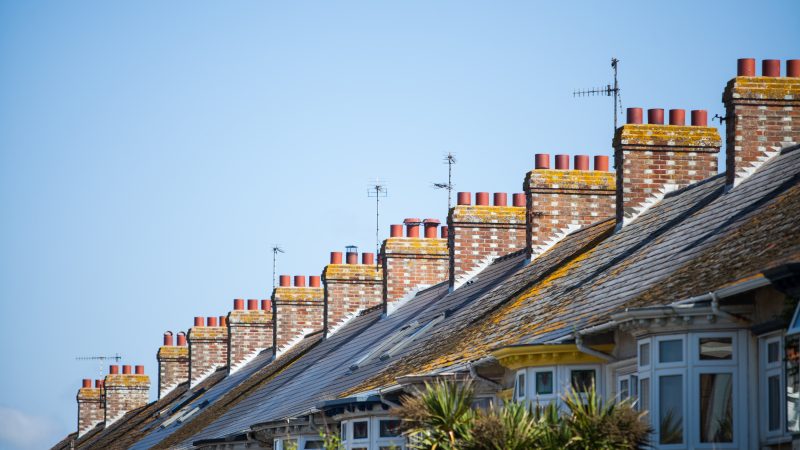
Two years on from Labour’s devastating defeat, debates about the party’s path to power have well and truly hit the wall. Two walls, to be exact. One – the Red Wall – is to be rebuilt, winning back Labour seats across the North, the Midlands and South Wales that were lost in 2019. The other – the Blue Wall – is to be smashed, capitalising on the erosion of traditionally reliable Tory support in the southeast. But don’t be fooled. Strategists with a passion for masonry are not neutral observers. Instead, they are admiring their own brickwork, having laid the ideological foundations for a particular agenda.
For example, reactionary commentators appealing to Labour’s “traditional” voter-base in the ‘Red Wall’ know exactly what they’re doing. They’re reducing working-class identity to white, northern, social conservatism to provide a palatable narrative for their own right-wing agenda: it’s what most “ordinary working people” want. If those seeking to rebuild the “Red Wall” mischaracterise the working-class, those seeking to smash the “Blue Wall” ignore them altogether. Typically, the “Blue Wall” is invoked to assemble a coalition of “middle-class” voters who have lost faith in the Conservative Party – voters who, according to Labour’s strategists, will not be coaxed by pledges of radical redistribution.
Both narratives, however, disregard the real material conditions of thousands of voters in the Red Wall, Blue Wall and beyond. That is, they neglect the existence – and the political, racial and geographical diversity – of the suburban working class.
Working-class suburbanites are cloaked by an image of the suburbs as a place to which people are pulled. However, the suburbs are increasingly home to those who have been pushed from the urban centre. Take Chingford and Woodford Green, a constituency on the outskirts of London. Despite its reputation as a wealthy suburb, half of workers subsist below the living wage. Displacement has been most noticeable in the south of the constituency, where young – predominantly Black and brown – people have moved in from Walthamstow, Hackney and Clapton to relatively cheaper housing.
But the precarious working and living conditions of these suburbanites go unnoticed by narratives that divide the country into two parts: white working-class men in the North and middle-class yuppies in the South. Those who challenge these crude stereotypes typically – and rightly – emphasise the existence of a multi-racial working-class in “metropolitan centres”. But this critique falls short because the multi-racial working-class are suburbanites, too.
They are the bus drivers, train ticket sellers, ticket inspectors, taxi drivers and delivery drivers on zero-hours contracts. They are the Amazon stowers being worked to death in sprawling warehouses. They are the postal service workers opening and closing your white picket fence. They are retail workers, grocers, phone screen fixers, receptionists, sales assistants, travel agents, call centre agents, and cashiers on minimum wage on the high street. They are the scaffolders, electricians, plasterers, locksmiths and decorators serving suburban homes. They are the council workers, road sweepers, firefighters, refuse collectors and litter pickers keeping suburban streets safe and clean. And they are the carers, single-mothers and grandparents, whose unrecognised and unpaid reproductive labour keeps the suburban cycle turning.
This isn’t to say that suburbia is a homogeneously working-class space. Far from it. It’s to say that suburbanites who live in impoverished pockets of otherwise affluent areas have been excluded from culturally reductionist narratives of working-class life. And it’s to open up the possibility of cultivating common bonds across blurred class boundaries. Bonds that are shaped in response to the suffocating realities of suburban life – monotonous work, unaffordable housing, debt, broken systems of care, domesticated surveillance, racial inequality, and impending ecological collapse – hidden behind the facade of the suburban dream.
The suburbanisation of social, housing and climate crises is pushing more and more people into peripheral precarity. And as the suburban working-class swells in size and scope, we cannot take a chance on triangulation. Instead of doubling down on aspiration and atomisation, the Labour Party must fight for a different suburban dream altogether: for a suburb that shares. One that invites us to imagine a more collectively fulfilling future – socialised housing, universal care and localised democratic ownership – across the vast and complex suburban terrain. One that turns the outskirts of the status-quo into centres of working-class power.




More from LabourList
‘It’s one year since I became Britain’s youngest MP. Here’s what I’ve achieved so far’
Tribute: ‘David Lipsey’s joie de vivre is missing in Labour politics today’
Ellie Reeves: ‘One year in, the next phase begins – focused on living standards’